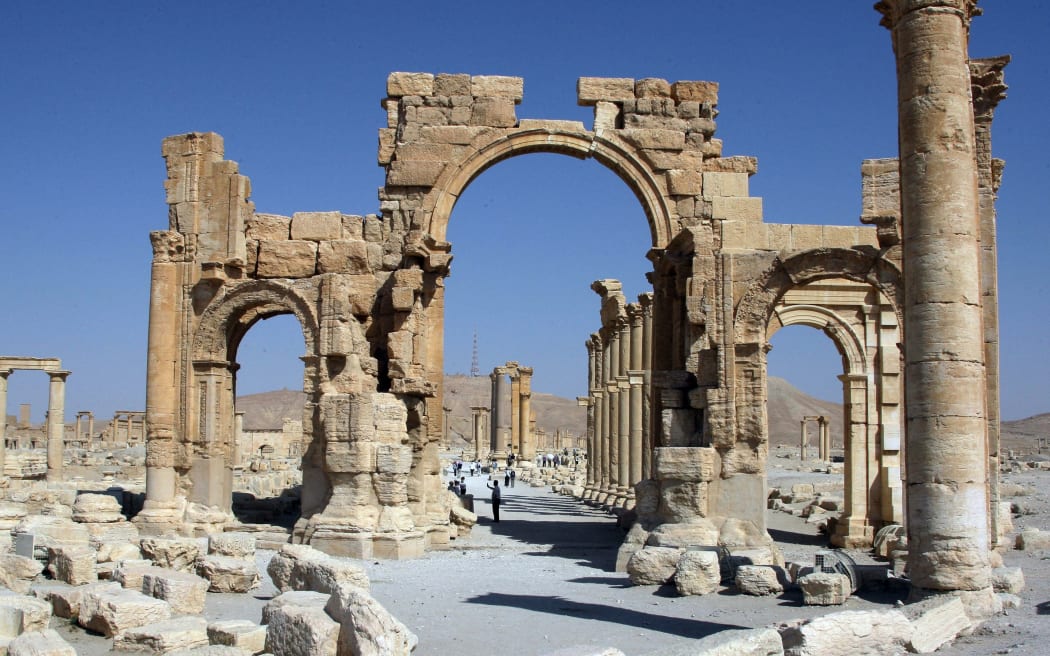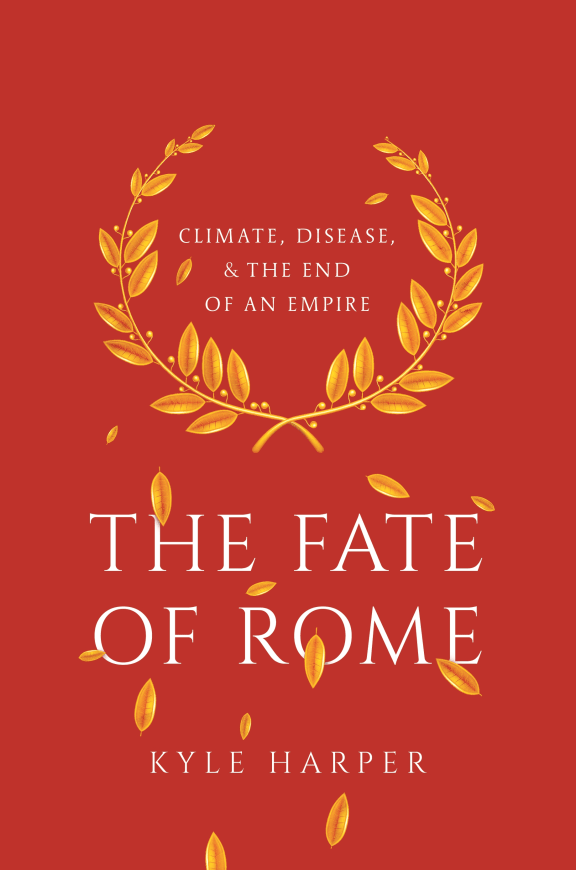At its peak, the Roman Empire covered approximately five million square kilometres and was home to roughly a quarter of the world's population. But despite its advanced infrastructure and immense power, the empire was brought to its knees by natural forces including disease and climate change.

The Arch of Triumph among the Roman ruins of Palmyra before it was destroyed. Photo: AFP
Professor Kyle Harper is the author of The Fate of Rome: Climate, Disease and the End of an Empire, which examines the collapse of the Roman Empire through a modern lens.
He says that while we do live in a different world, where we have developed control over infectious disease, there are still lessons to be learnt looking back on ancient societies - and our control over such problems remains imperfect.
Pandemics and the unexpected changes they bring have always been part of the natural world and globalisation tends to increase the chances of disease outbreaks.
Harper says the Roman Empire was an early form of globalisation, with extensive trading across the empire which stretched from the northern isles of Britain all the way to the Sahara. At the time, the Empire was trading with Africa, the near east, China and India, with a huge demand for spices and silk.
"Think about the Roman roads and the great networks of seaborne trade that characterised the Roman Empire as well, as kind of an early globalisation," he says.
"It created an ecosystem for infectious disease that ultimately contributed to some of the very serious challenges that the Roman Empire faced."
At this time, one in four humans alive lived inside the Roman Empire - and at its height, its eventual downfall would have seemed unimaginable.
"There's something in our psychology that maybe makes us want to forget the catastrophes that are inevitably going to occur in human history," Harper said.
"The Romans combined that natural human psychology with a kind of imperial arrogance."
The city of Rome itself was demilitarised at the centre in a way that Harper said was historically rare.

The Fate of Rome by Kyle Harper Photo: Supplied
"The Romans were able to push out violence to the edges of the empire and that gave them the sense that their empire was eternal, and they would rule forever.
"Of course, they ruled for an awfully long time, one of the most enduring political formations in history, but all things come to an end including even the Roman Empire."
The first pandemic to strike the empire was known as the Antonine Plague, which spread from 165 to 180. This was during the reign of Emperor Marcus Aurelius, who was considered one of the most capable emperors to have served.
The Roman Empire was also at its height, with maximum territorial extent and hegemony against its neighbours across virtually every frontier, Harper said. This time was described by the English historian Edward Gibbon as "the happiest period in human history".
"Almost out of the blue, at this moment of peak population and prosperity and imperial power, the Roman Empire is struck by what is unmistakably a pandemic, a disease event that we first hear of outside the Roman Empire in Arabia," he said.
"It was extremely lethal, it was terrifying for contemporaries and of course they didn't have the same kind of natural scientific framework for understanding disease that we have.
"They explained it in terms of the god Apollo who was the god of plague and they thought that they had somehow angered Apollo, so the public response was very prominently organised around appeasing the god Apollo, which didn't seem to help and the plague ravaged the Roman society."
While this pandemic was not the moment the empire fell apart, it was, according to Harper, a "subtle and profound moment of transformation".
Emperor Aurelius helped pull the Roman Empire through with an attitude of stoicism - the belief that many things are outside of your control. He lived through a terrible plague, saw many of his friends and contemporaries die, but continued to have a very stoic attitude.
While the Antonine Plague was believed by historians to have been smallpox, in the third century a much more mysterious disease would emerge. Known as the Plague of Cyprian, the pandemic afflicted the Roman Empire from about AD 249 to 262.
"We don't really have the same level of description of what it was, we know it was a terrifying disease that was highly lethal, that spread very quickly, that brought on fever and haemorrhaging," Harper said.
While these pandemics were not the only thing that led to the fall of the Roman Empire, Harper said they played a large part.
"I think that because the Romans couldn't fund their armies, they had lost their military superiority, both numerically as well as strategically. Roman power was extraordinary but in some ways it was always fragile. The Romans could lose a battle here and there… but they were always sort of able to bounce back, until they weren't."
In AD 400, Rome was well set up with suburbs, libraries, bakeries, brothels and public toilets - but a mere 75 years later, the Barbarians would be at the gate.
"It was gone very quickly. In historical terms, in the blink of an eye," Harper said.
"And the city of Rome itself is of course a kind of unusual creature, that they thought was eternal and this was a psychological shock when it was first ransacked in 410, something like the shock of 9/11."
By AD 600, the city had gone from housing a million people to barely 50,000 - with huge quarters of it left almost empty.
Looking at the world's current predicament with Covid-19, Harper said had been fascinating to watch as an ancient historian who studies pandemics - in particular, the coincidence of the pandemic occurring alongside widespread protests for racial equality across the United States.
"It's not a virus that infects the respiratory tract that's causing people to go out into the streets and protest against racial inequality and police violence, and yet clearly somehow there is this connection," he said.
"It's kind of the overlap, the coincidence of this biological shock with this social tension that has created this very energetic powerful moment in the United States, that clearly is going to have longer term repercussions, but we're not totally clear what they're going to be."
This psychological shock would be very similar to what the people of Rome experienced as their population was decimated, he said, and was hopefully something we could learn from today.
"Maybe a silver lining is this reminds us of our vulnerability and helps us develop forms of response and social capital that will make us more resilient in the face of what is inevitably the next one."

